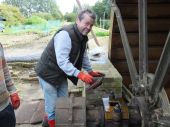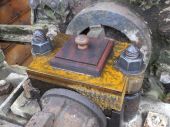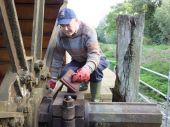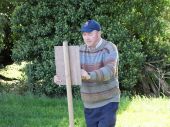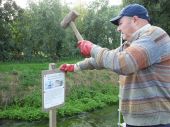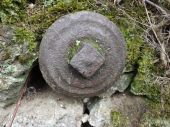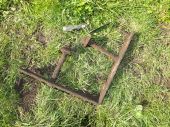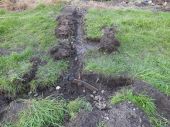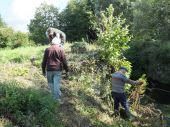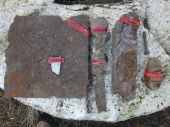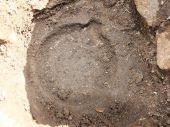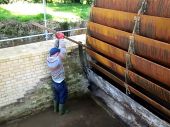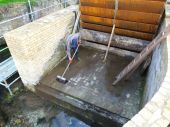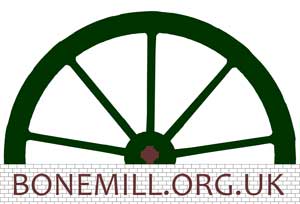4 volunteers were working today, we first had a meeting to discuss various topics. This included winterising the site when materials are available and the need to avoid working in and around tunnels due to bats. Tesco have contacted us about their staff helping with the project and we decided there was plenty for them to do. It was agreed that the time lapse video on the website showing the latest wall being built was an interesting feature. The fertilizer report was discussed and its interesting to know that single superphosphate fertilizer was made as this shows that sulphuric acid was used which is what the large jars we found would have been used for. Flyers advertising for volunteers and publicising our work have been put up in the area.
The history of the mill was discussed, the first deeds which show the smaller building between trench and river are dated 1854, and the later one showing the large building after additional land was purchased is dated 1876, but it was probably extended in the 1850s, as towards the 1870s business was tailing off and it closed in 1890.
The bearing cap covers made by Dennis were put in place, they fitted perfectly and looked really good. The website address was printed on labels and put on the notice boards on both sides of the river so walkers can find out more about the restoration work. One notice board was falling over so this was reset.
Towards the boiling house area (next to the blacksmith shop) a large circular building tie set into the carstone wall was discovered, and further along the brick wall was exposed to find the edge of the building and at each end were 90 degree iron corner brackets with large bolts, nuts and washers through them and four nails. These were left/put back in situ and measurements taken to determine the size of the buildings in this area. Along the wall between these were large bolts set into the black tar-like floor material, holding bars in place.
3 large stones were noticed in the river near the staunch, so the vegetation was cut away to allow them to be retrieved by the digger next time it is on site. This also exposed the corner wall of the staunch where a lizard was seen. The metal detector was used in this area and other parts of the site and several finds were discovered. These included a bearing cap, large lump of iron with black tar and red paint/material, flat piece of sheet iron and a strip of iron sheet. Also found today were two bones, one of them was the smallest find ever, and a large piece of coated glass. All finds were recorded, including large plates which were already resting on top of stones in the blacksmiths area.
Wood from one of the locations in the brick floor of the main building was taken for analysis as it appears to be contaminated with oil, which suggests it could be the base for a steam engine. In the same area a cast iron plate was set below floor level with a circular recess & slot, which is thought to be a column support.
The water wheel bearings were oiled and the wheel was turned slightly to ensure it does not seize up. Rain water was swept away from the upstream brick floor.
The elevator was viewed to ensure it was safe and the brickwork platform built last week to support it was checked to ensure it had set. Writing on the elevator sprocket was noted to compare with items in the catalogues we have, it reads EWARTS PATENT DRIVE CHAIN 78 and on the other side SOLE MAKERS LEYS DERBY. It was covered over to hide it and protect from rain.
Graham Bartlett Interactive Plan Volunteer Previous Next Previous Next


